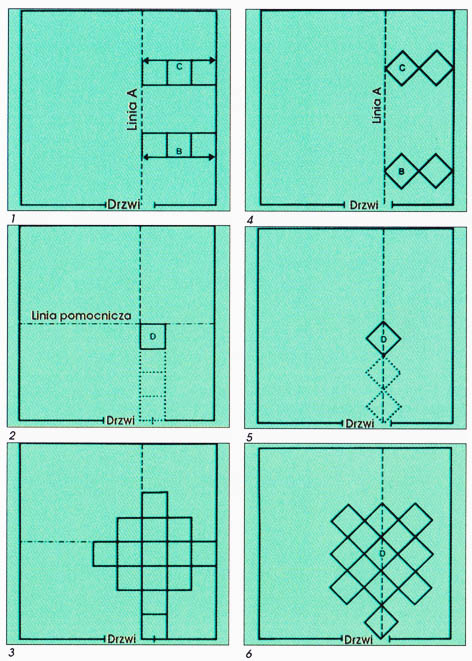 In the specialist trade, carpet tiles of various qualities are offered, structure, surfaces and shades – the selection depends on their application (residential area, wet room, e.t.c.). The size of the tiles is 50 x 50 cm or 40 x 40 cm. Carpet tiles do not stick, but it lays loosely without joints on the floor surface. This has the advantage, that they can be removed at any time without damaging the floor. Naturally, when laying tiles, their surface is aligned with the surrounding walls.
In the specialist trade, carpet tiles of various qualities are offered, structure, surfaces and shades – the selection depends on their application (residential area, wet room, e.t.c.). The size of the tiles is 50 x 50 cm or 40 x 40 cm. Carpet tiles do not stick, but it lays loosely without joints on the floor surface. This has the advantage, that they can be removed at any time without damaging the floor. Naturally, when laying tiles, their surface is aligned with the surrounding walls.
Initial work
When laying loosely laid tiles, it is especially important to prepare the substrate thoroughly. The surface to be laid should be dry, clean, flat and relatively smooth. Raw substrates should be smoothed out by pouring a liquid screed. When laying on a screed, the minimum drying time must be observed 6 weeks.
Instructions for laying in a parallel position
Begin by dividing the room, during which you go from door to line (A) parallel to the opposite wall. The distance of this line from the side wall is determined by placing a greater number of plates or by measuring from two distant points (B i C).
At the end points of this line, two thin steel nails should be hammered into the floor and a carpentry string should be attached to them..
Then establish a starting point for tiling. From door to. ok. in the center of the room, a multiple of the size of the tile should be determined. Now draw the auxiliary line in the right corner to line A. You can measure the exact right angle and mark the same dimension from the end point of line A (e.g. 2 m) to two equally distant extension line points from the intersection point.
Now you need to stick the first plate (D) with double-sided adhesive tape to the angle formed from the A line and the auxiliary line. Further tiles are then loosely laid. It starts with the tile D and orientates itself along the guide line. The tiles are laid without joints, gradual stacking makes work easier,
Diagonal arrangement instruction
Mark line A that is parallel to the main wall, starting from the door. The distance of this line to the side wall should be a multiple of the diagonal of the tile.
Then, starting from the door, on line A, more tiles should be placed diagonally towards the center of the room. Stick tile D with double-adhesive tape as a starting point for further laying.
Now lay more tiles in relation to tile D without joints. A step-by-step process is also advantageous here. The outer tiles should be carefully measured and cut with a carpet knife.